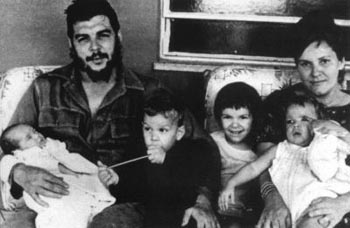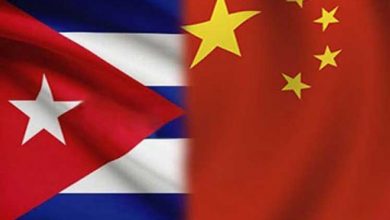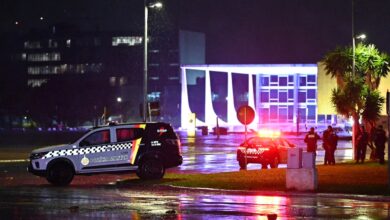
 Ernesto Che Guevara’s 83th birthday anniversary has been celebrated in the central Cuban province of Sancti Spiritus, where he operated. The diary of Che Guevara is published.
Ernesto Che Guevara’s 83th birthday anniversary has been celebrated in the central Cuban province of Sancti Spiritus, where he operated. The diary of Che Guevara is published.
Cuba has published the diary of Che Guevara ‘Diary of a Combatant’ more than 50 years after Ernesto Che Guevara kept the it during the armed struggle he waged alongside Fidel Castro from the Sierra Maestra Mountains in Cuba.
According to Guevara’s widow, Aleida March, the goal for publishing the diary is “to show his work, his thoughts, his life, so that the Cuban people and the entire world get to know him and don’t distort things anymore.”
Che Guevara ‘s Biography
Ernesto Che Guevara was born in Rosario in Argentine in 1928. After studying medicine at the University of Buenos Aires he worked as a doctor. While in Guatemala in 1954 he witnessed the socialist government of President Jacobo Arbenz overthrown by an American backed military coup.
Disgusted by what he saw, Guevara decided to join the Cuban revolutionary, alongside with Fidel Castro, in Mexico.
In 1956 Che Guevara, Fidel Castro and eighty other men and women arrived in Cuba in an attempt to overthrow the government of General Fulgencio Batista. This group became known as the July 26 Movement. The plan was to set up their base in the Sierra Maestra mountains.
On the way to the mountains they were ambushed by government troops. By the time they reached the Sierra Maestra there were only sixteen men left with twelve weapons between them. For the next few months Castro’s guerrilla army raided isolated army garrisons and were gradually able to build-up their stock of weapons.
When the guerrillas took control of territory they redistributed the land amongst the peasants. In return, the peasants helped the guerrillas against Batista’s soldiers. In some cases the peasants also joined Castro’s army, as did students from the cities and occasionally Catholic priests.
In an effort to find out information about the rebels people were pulled in for questioning. Many innocent people were tortured. Suspects, including children, were publicly executed and then left hanging in the streets for several days as a warning to others who were considering joining the revolutionaries.
The behaviour of Batista’s forces increased support for the guerrillas. In 1958 forty-five organizations signed an open letter supporting the July 26 Movement. National bodies representing lawyers, architects, dentists, accountants and social workers were amongst those who signed.
Fidel Castro, who had originally relied on the support of the poor, was now gaining the backing of the influential middle classes.
General Fulgencio Batista responded to this by sending more troops to the Sierra Maestra. He had 10,000 men hunting for Castro and his 300-strong army. Although outnumbered, Castro’s guerrillas were able to inflict defeat after defeat on the government’s troops.
In the summer of 1958 over a thousand of Batista’s soldiers were killed or wounded and many more were captured. Unlike Batista’s soldiers, Castro’s troops had developed a reputation for behaving well towards prisoners. This encouraged Batista’s troops to surrender to Fidel Castro when things went badly in battle. Complete military units began to join the guerrillas.
The United States supplied Batista with planes, ships and tanks, but the advantage of using the latest technology such as napalm failed to win them victory against the guerrillas. In March 1958, US President Dwight Eisenhower, disillusioned with Batista’s performance, suggested he held elections.
This he did, but the people showed their dissatisfaction with his government by refusing to vote. Over 75 per cent of the voters in the capital Havana boycotted the polls. In some areas, such as Santiago, it was as high as 98 per cent.
Fidel Castro became confident he could beat Batista in a head-on battle. Castro’s troops left the Sierra Maestra mountains and began to march on the main towns. After consultations with the United States government, Batista fled Cuba.
Senior Generals left behind attempted to set up another military government. Castro’s reaction was to call for a general strike. The workers came out on strike and the military was left no choice other than to accept the people’s desire and strong willpower for change.
Fidel Castro marched into Havana on January 9,1959, and became Cuba’s new leader.
In its first hundred days in office Castro’s government passed several new laws. Rents were cut by up to 50 per cent for low wage earners; property owned by Fulgencio Batista and his ministers was confiscated; the telephone company was nationalized and the rates were reduced by 50 per cent; land was redistributed amongst the peasants (including the land owned by the Castro family); separate facilities for blacks and whites (swimming pools, beaches, hotels, cemeteries etc.) were abolished.
In 1960 Che Guevara visited China and the Soviet Union
In 1960 Guevara visited China and the Soviet Union. On his return he wrote two books Guerrilla Warfare and Reminiscences of the Cuban Revolutionary War. In these books he argued that it was possible to export Cuba’s revolution to other South American countries.
Che Guevara served as Minister for Industries (1961-65) but in April 1965 he resigned and become a guerrilla leader in Bolivia.
In 1967 David Morales recruited Félix Rodríguez to train and lead a team that would attempt to catch Che Guevara. Guevara was attempting to persuade the tin-miners living in poverty to join his revolutionary army. When Guevara was captured, it was Rodriguez who interrogated him before he ordered his execution in October, 1967. Rodriguez still possesses Guevara’s Rolex watch that he took as a trophy.
http://www.youtube.com/watch?v=ErkQ0w1K2yw

 Ernesto Che Guevara’s 83th birthday anniversary has been celebrated in the central Cuban province of Sancti Spiritus, where he operated. The diary of Che Guevara is published.
Ernesto Che Guevara’s 83th birthday anniversary has been celebrated in the central Cuban province of Sancti Spiritus, where he operated. The diary of Che Guevara is published.

